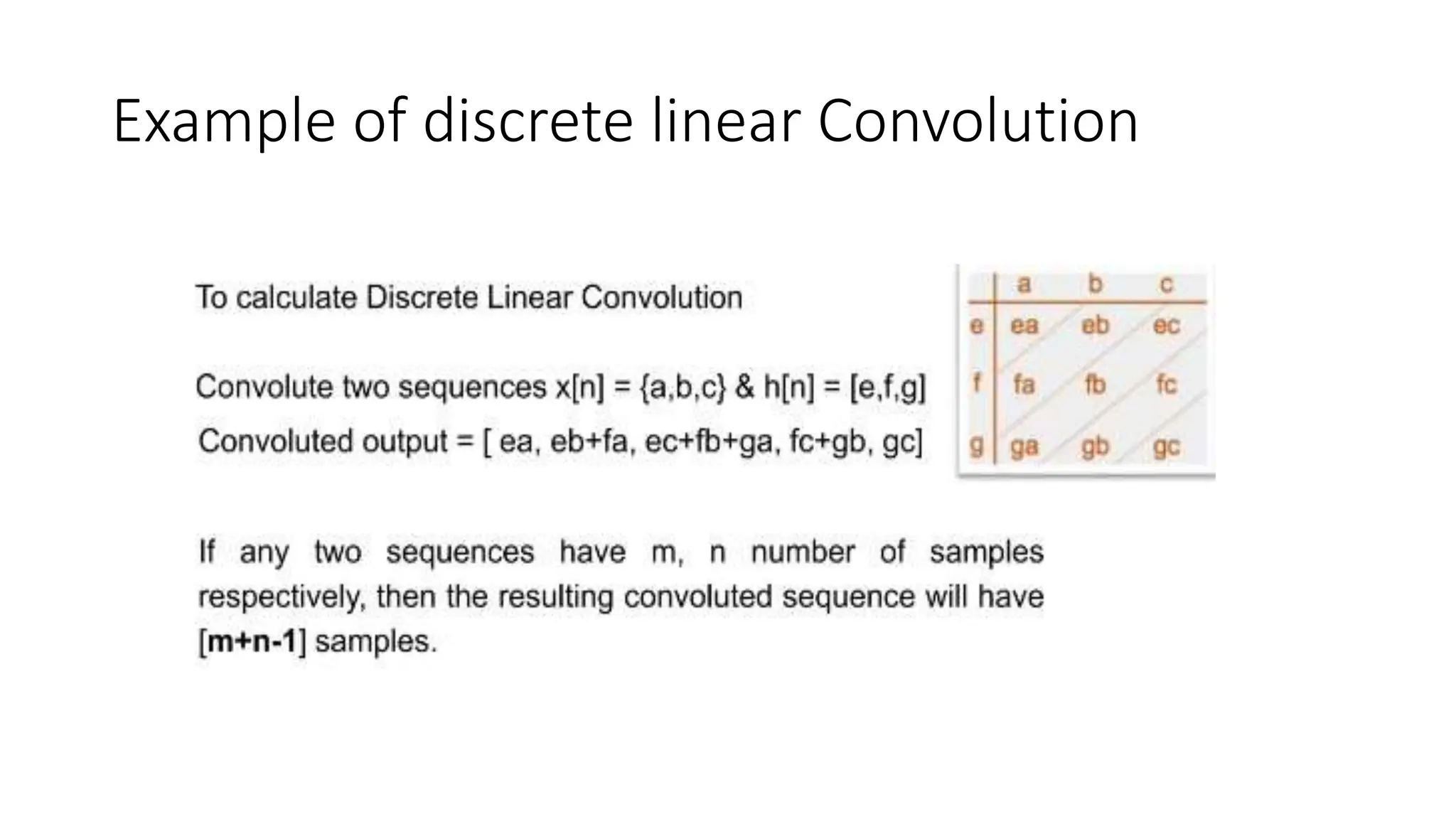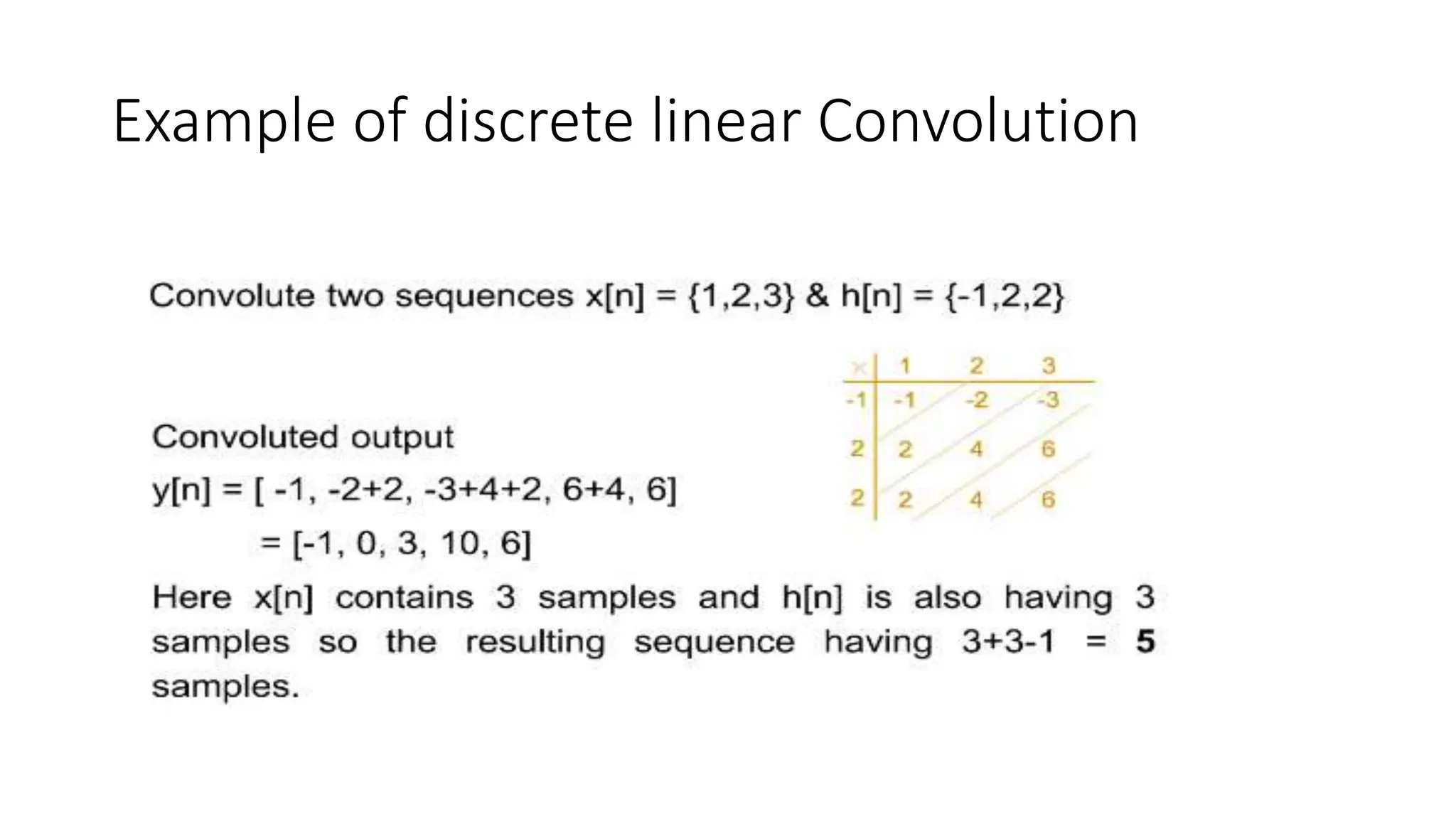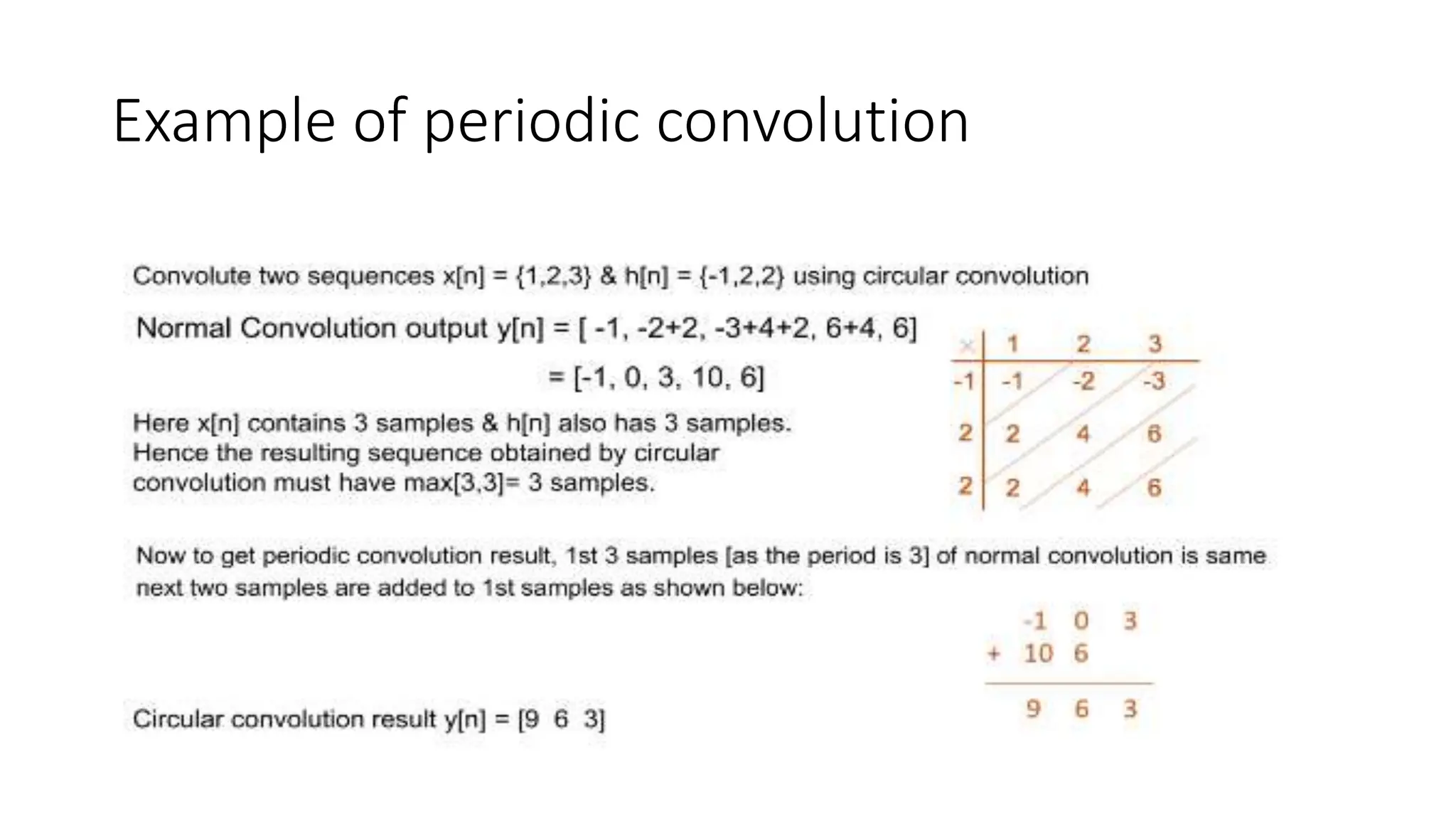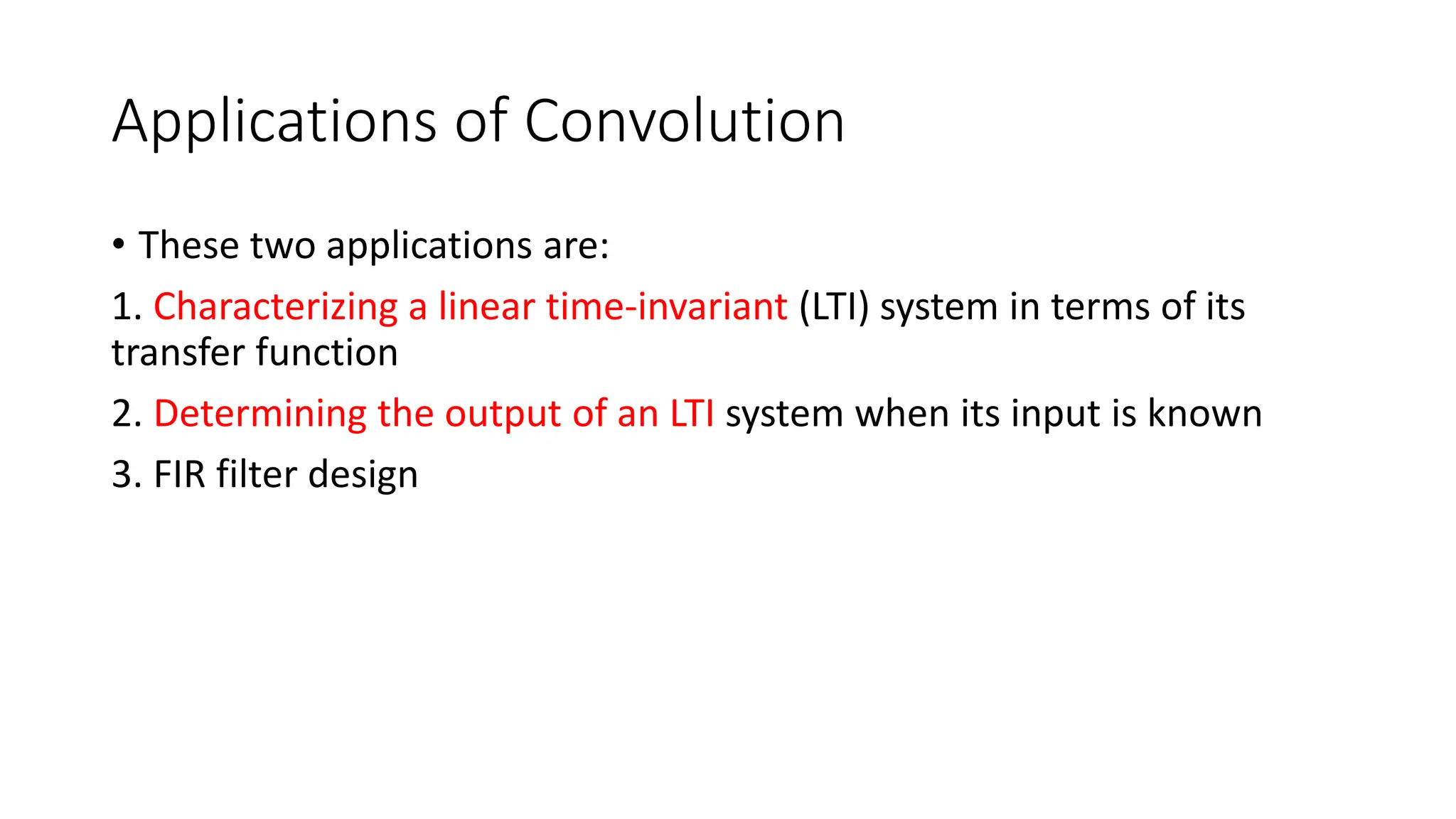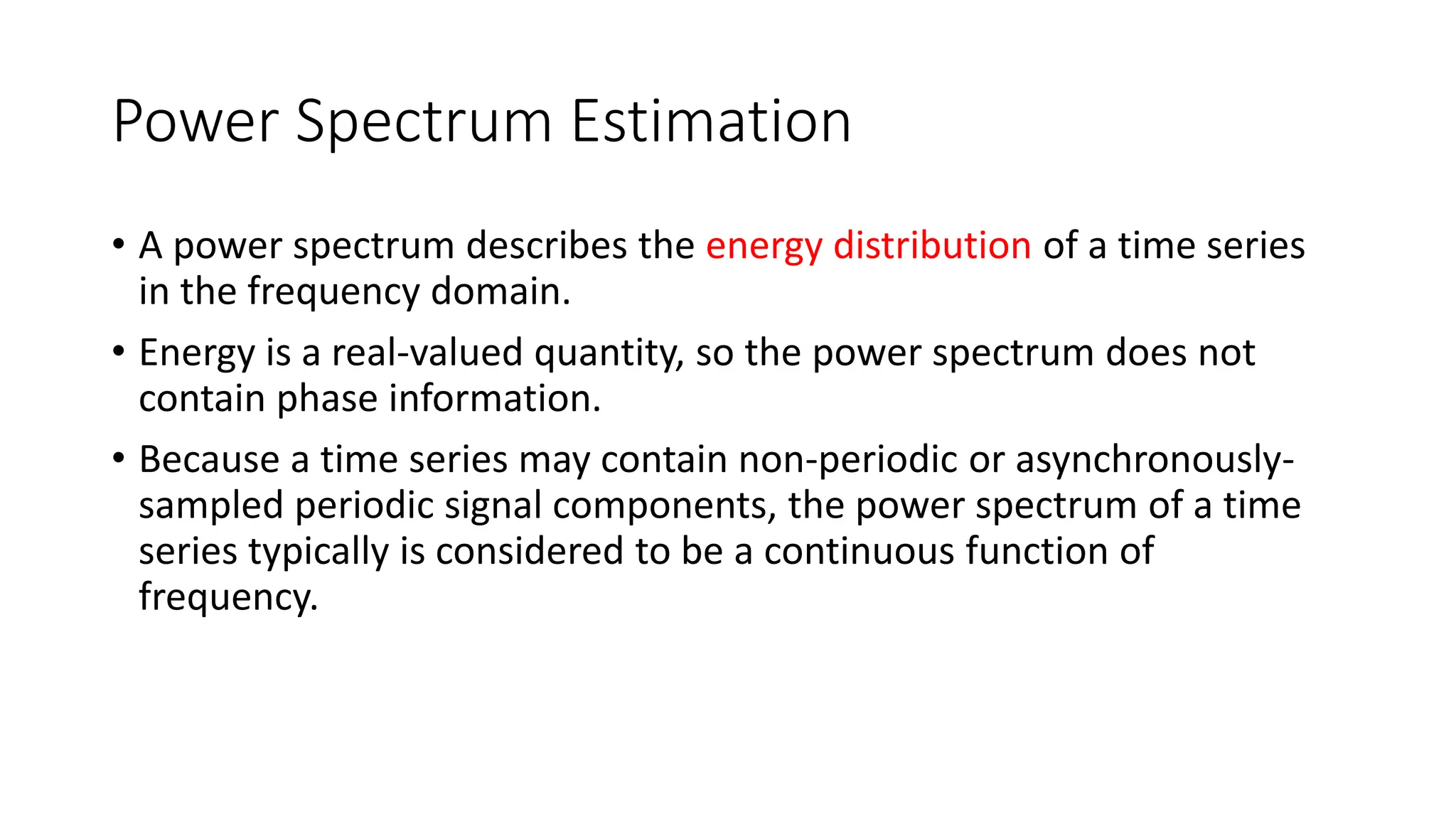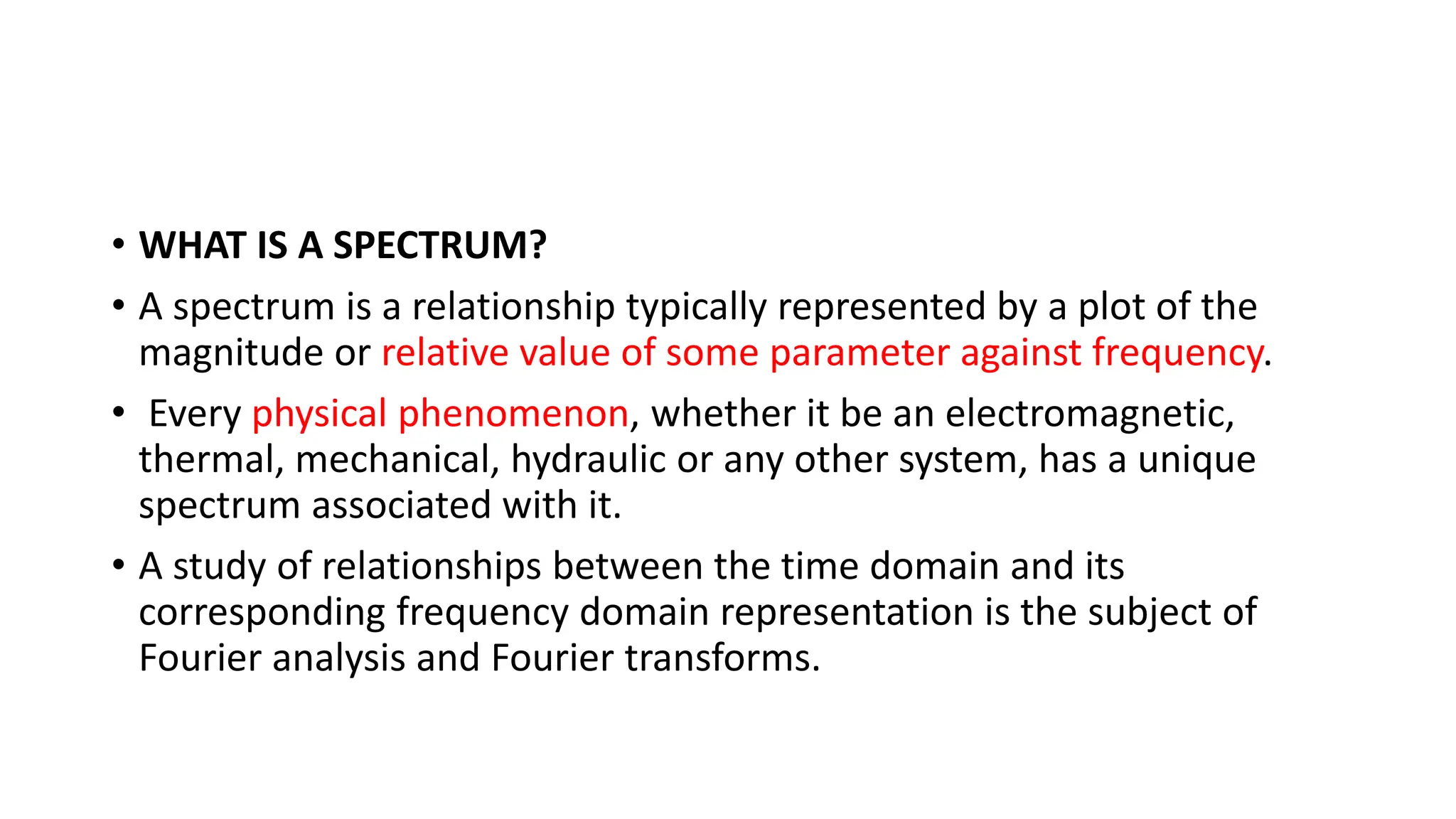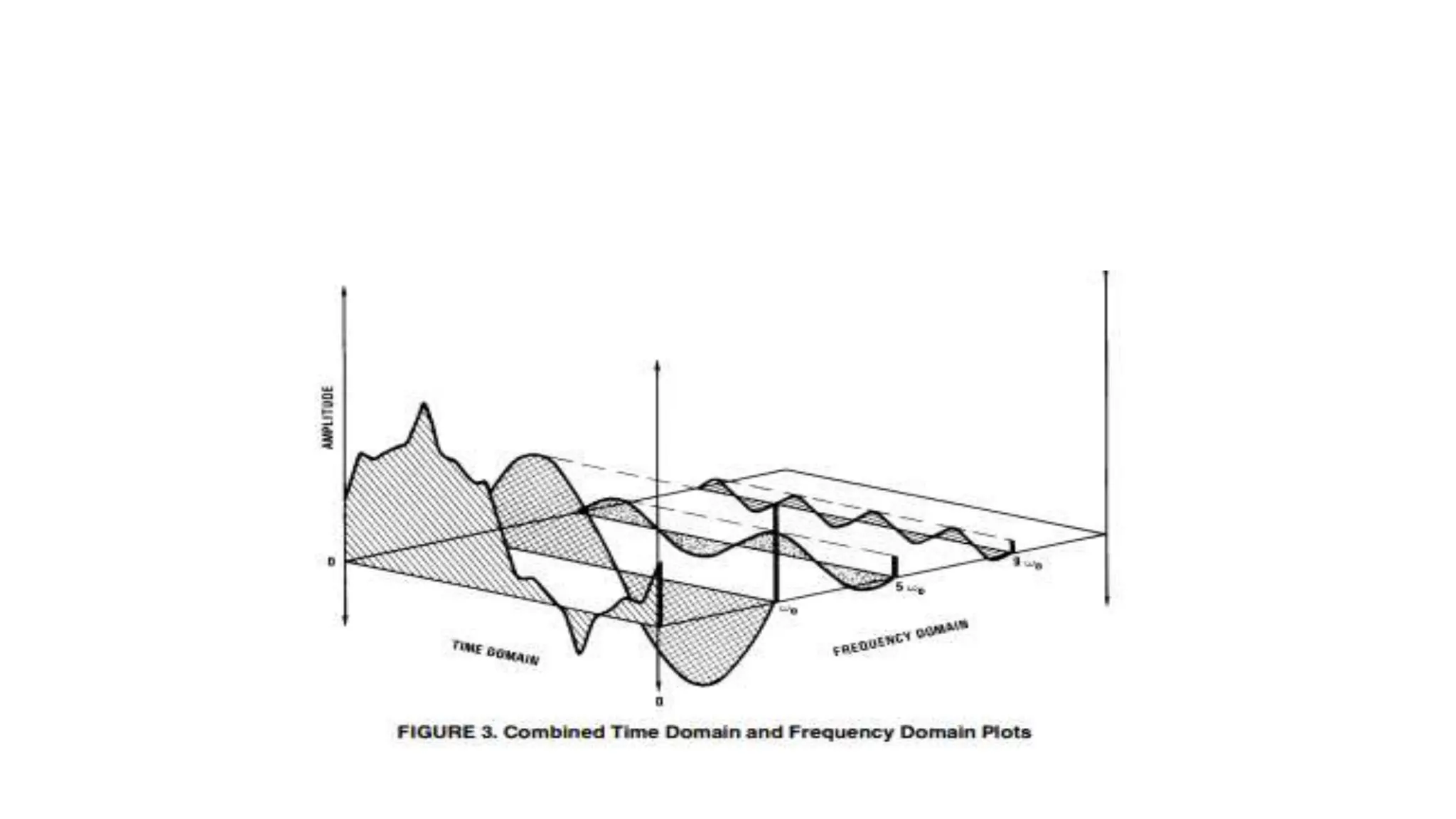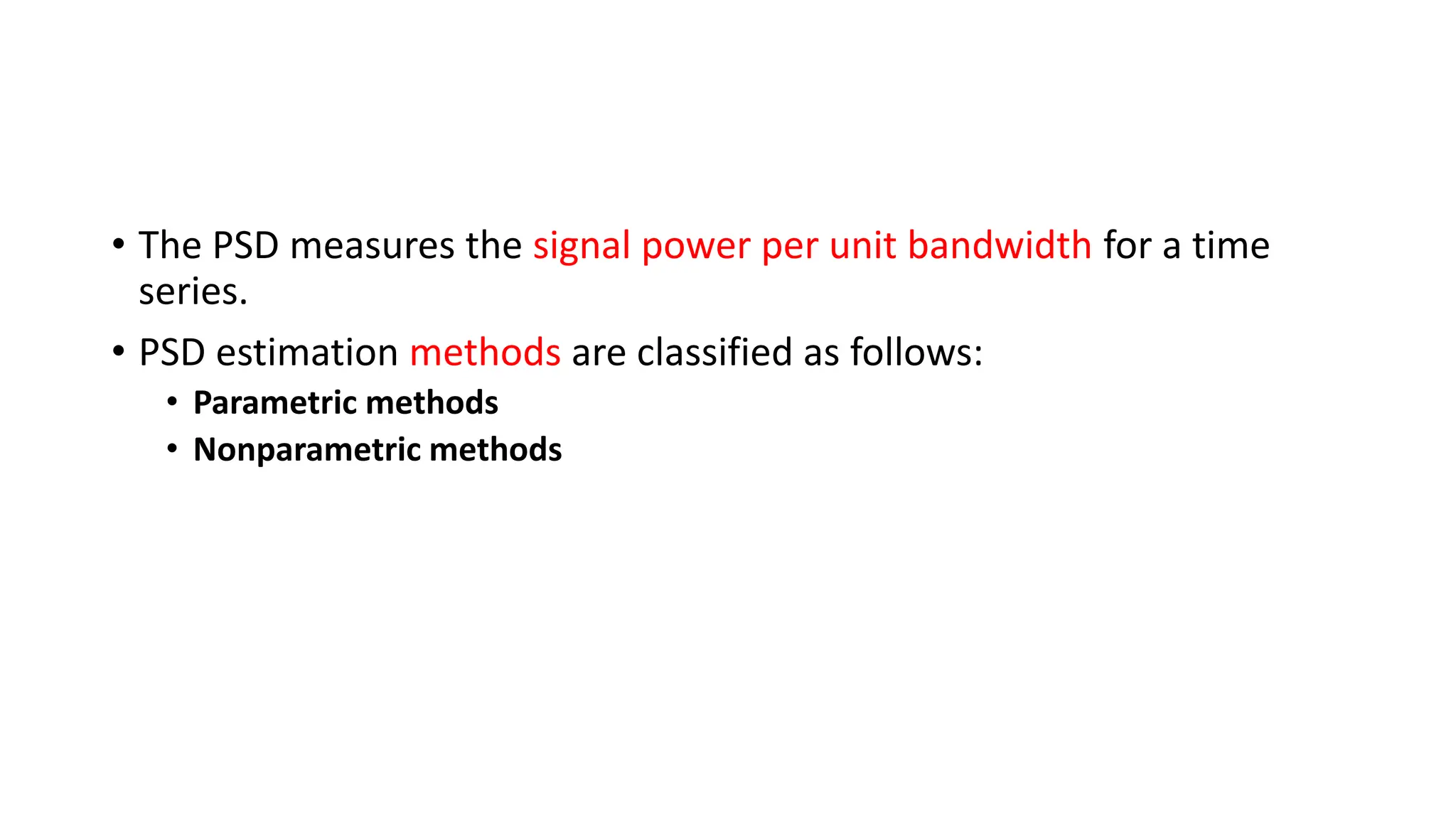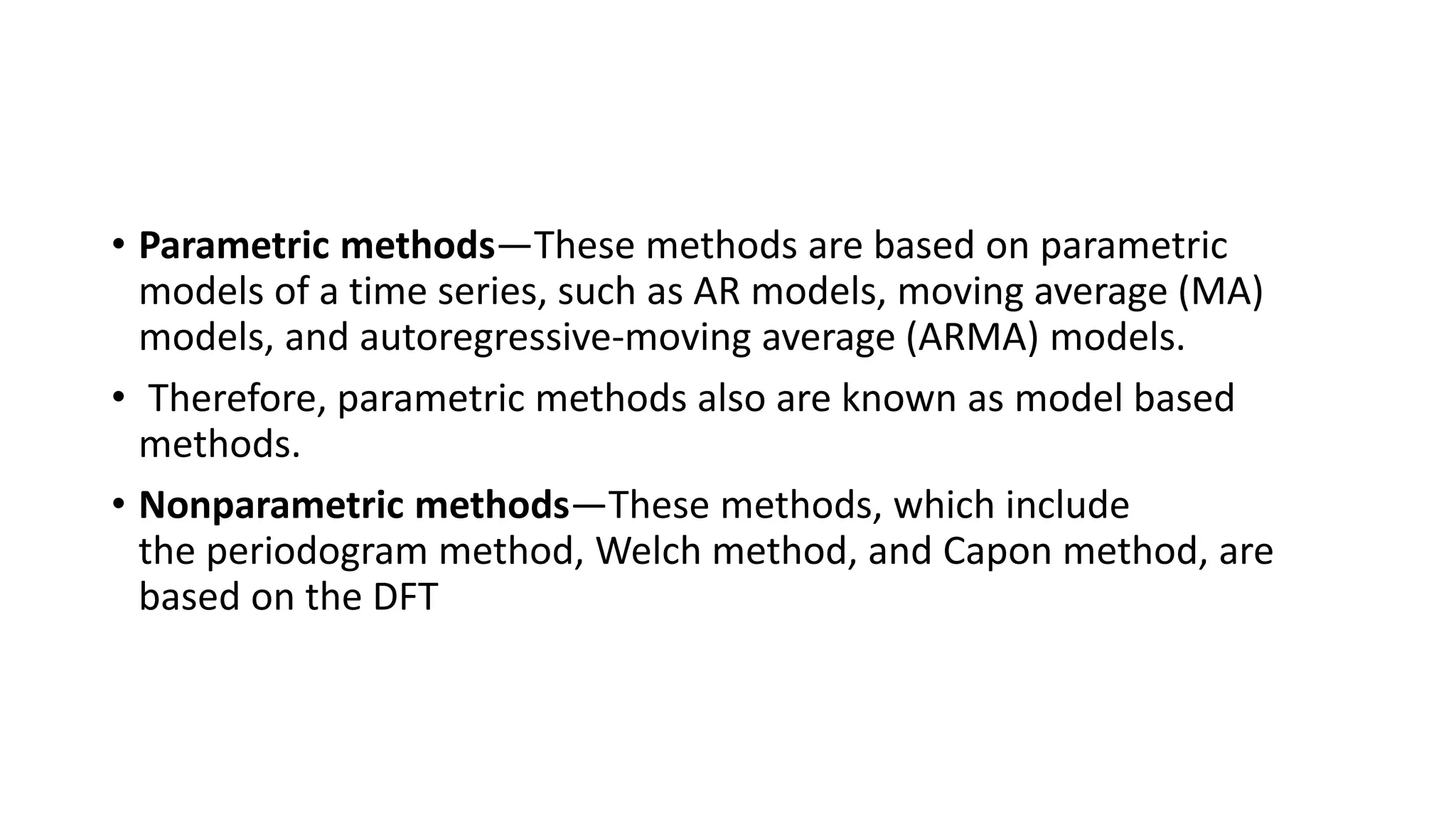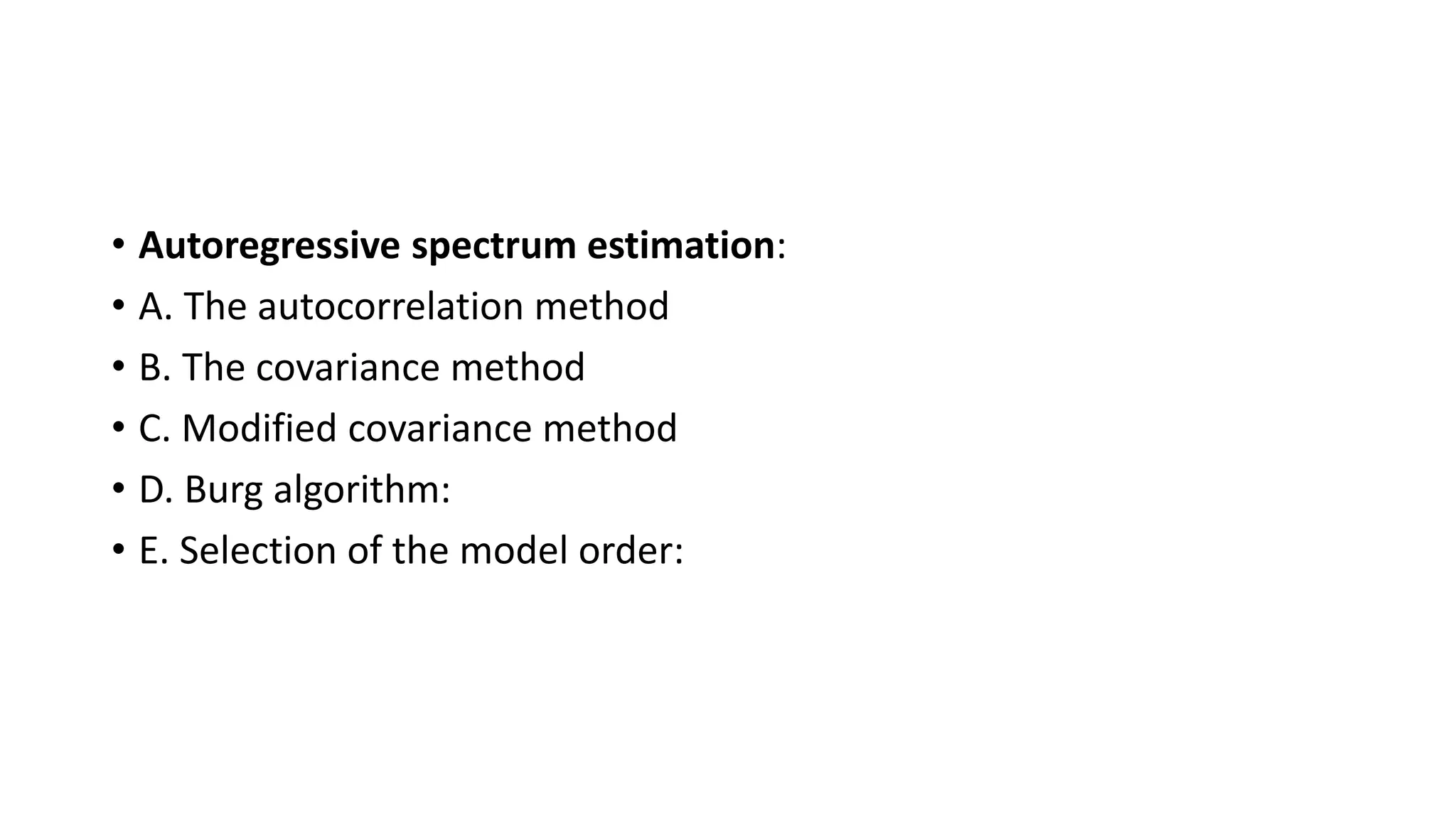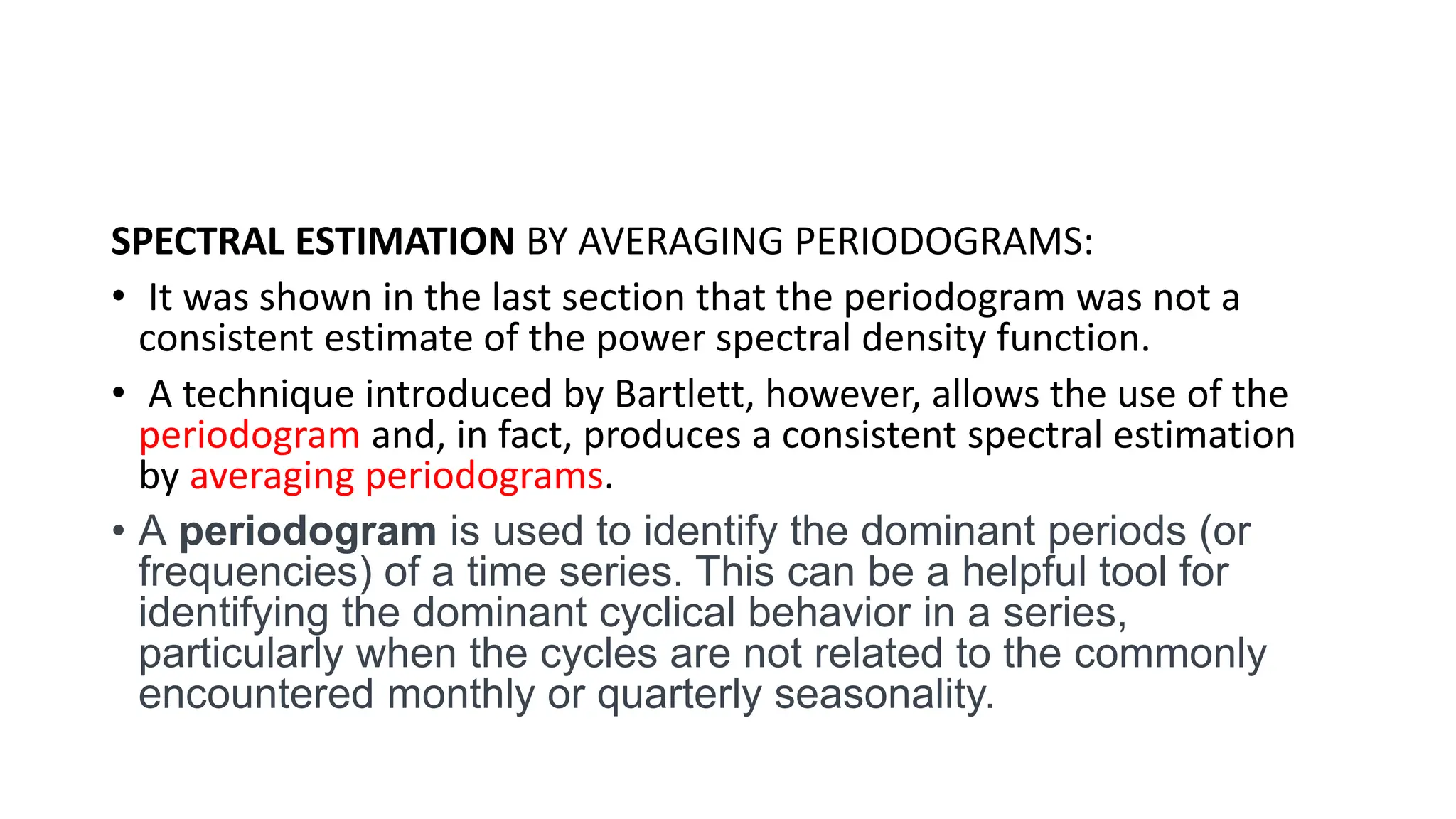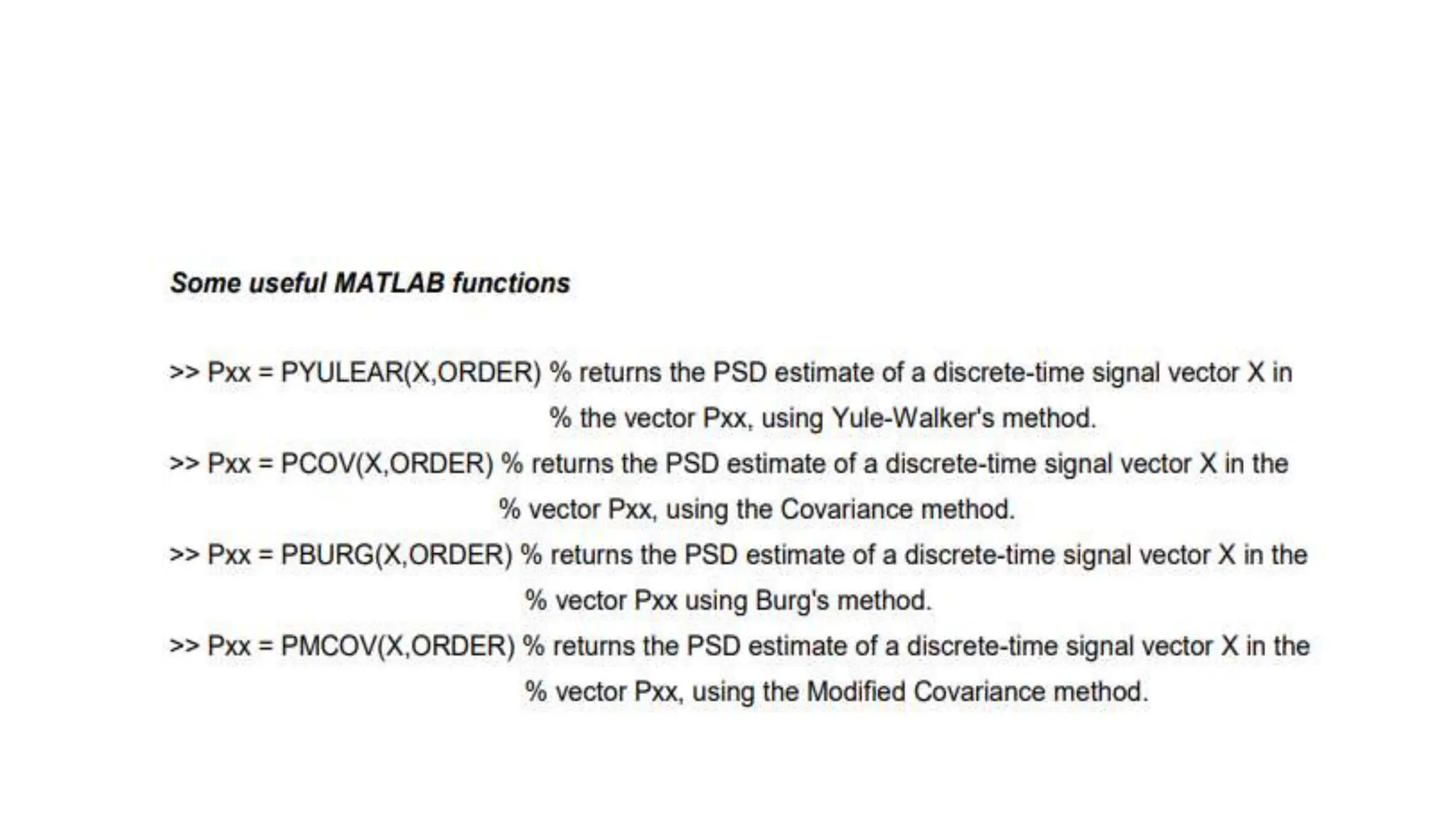This document discusses various techniques for data compression, correlation, convolution, and power spectrum estimation. It defines correlation as the degree of relationship between two or more variables. Convolution is described as a way to combine two signals into a resultant signal. Power spectrum estimation involves determining the energy distribution of a time series in the frequency domain without phase information. Nonparametric and parametric methods are discussed for power spectrum estimation.
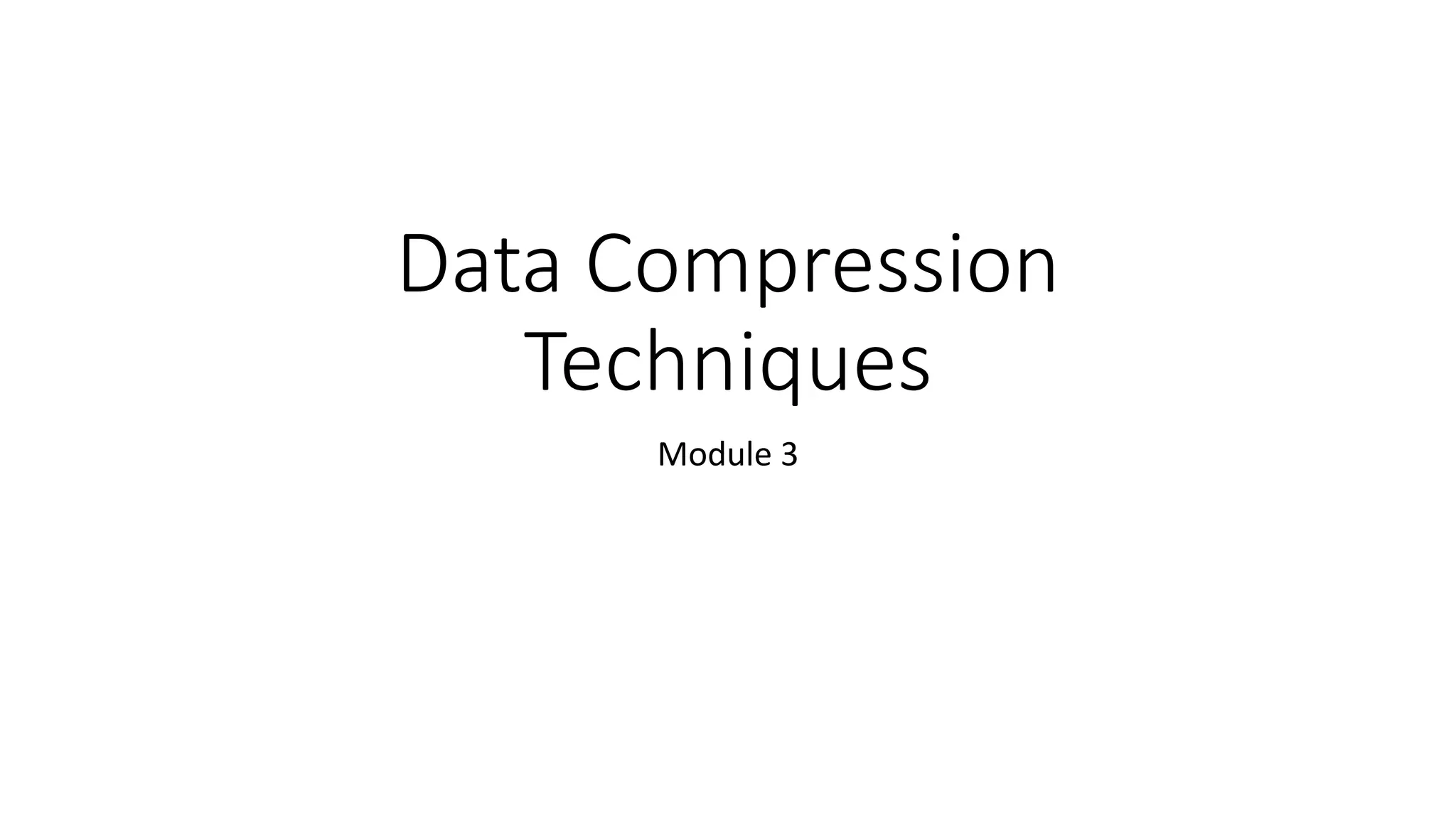
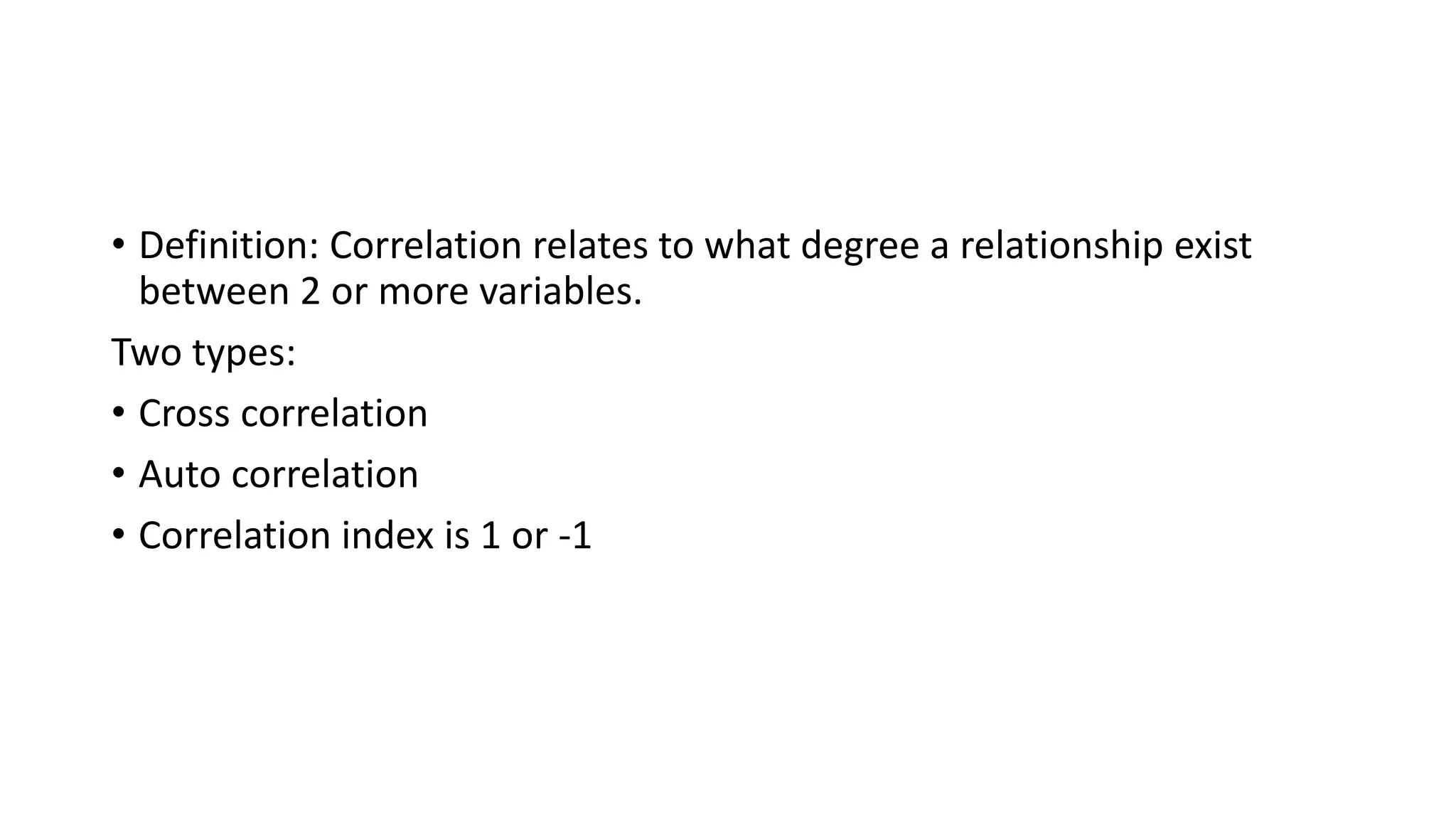
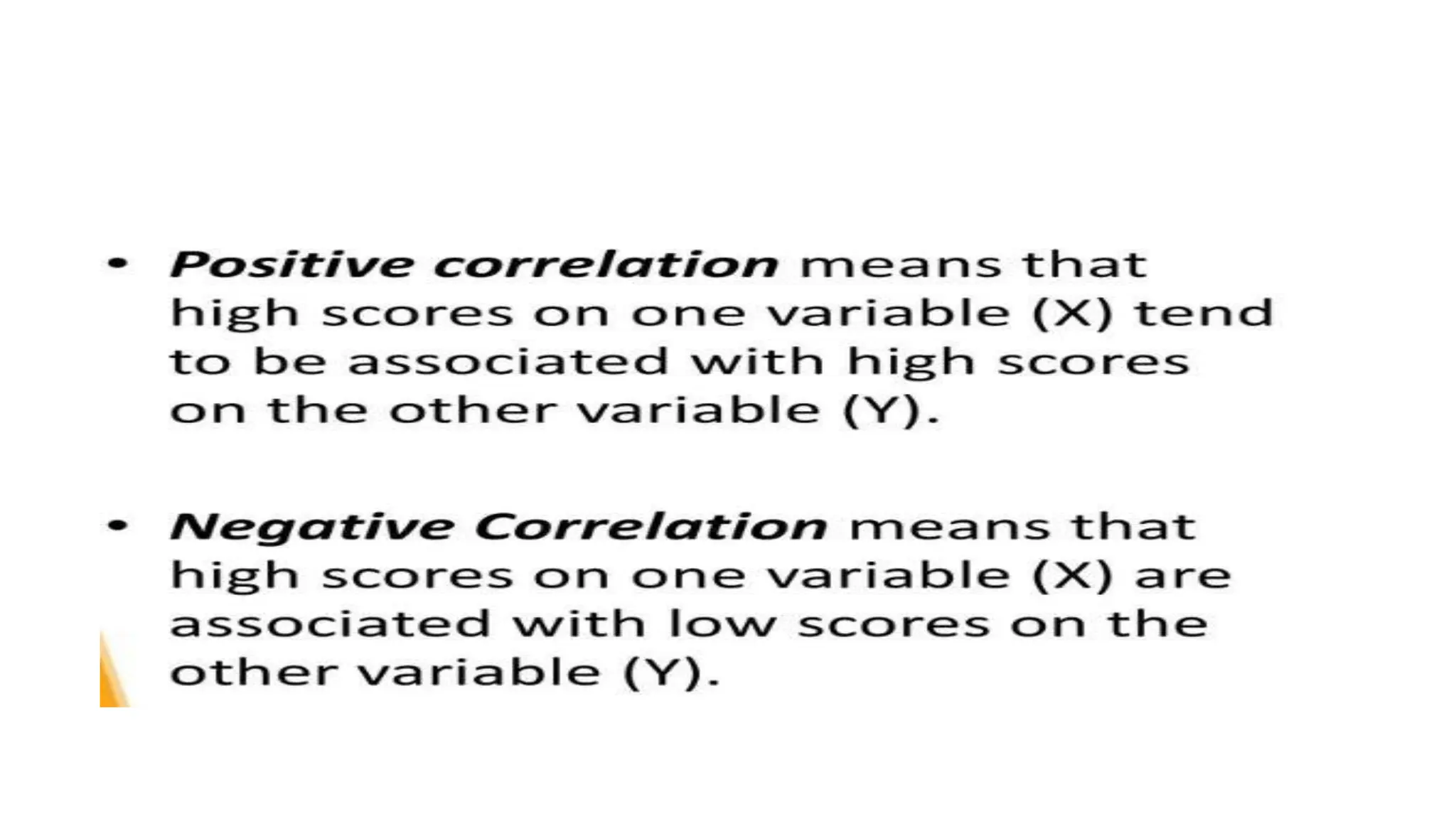
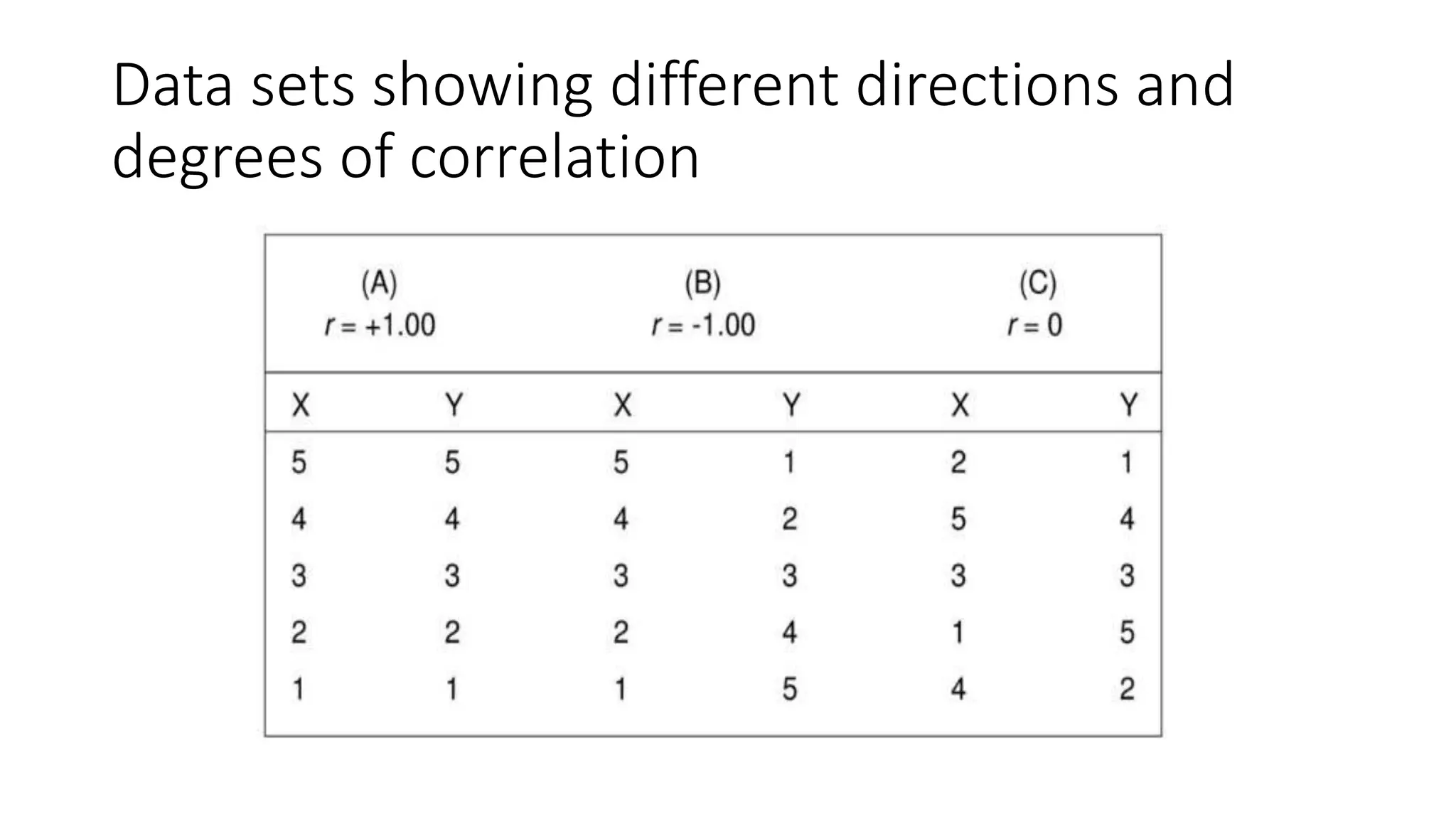
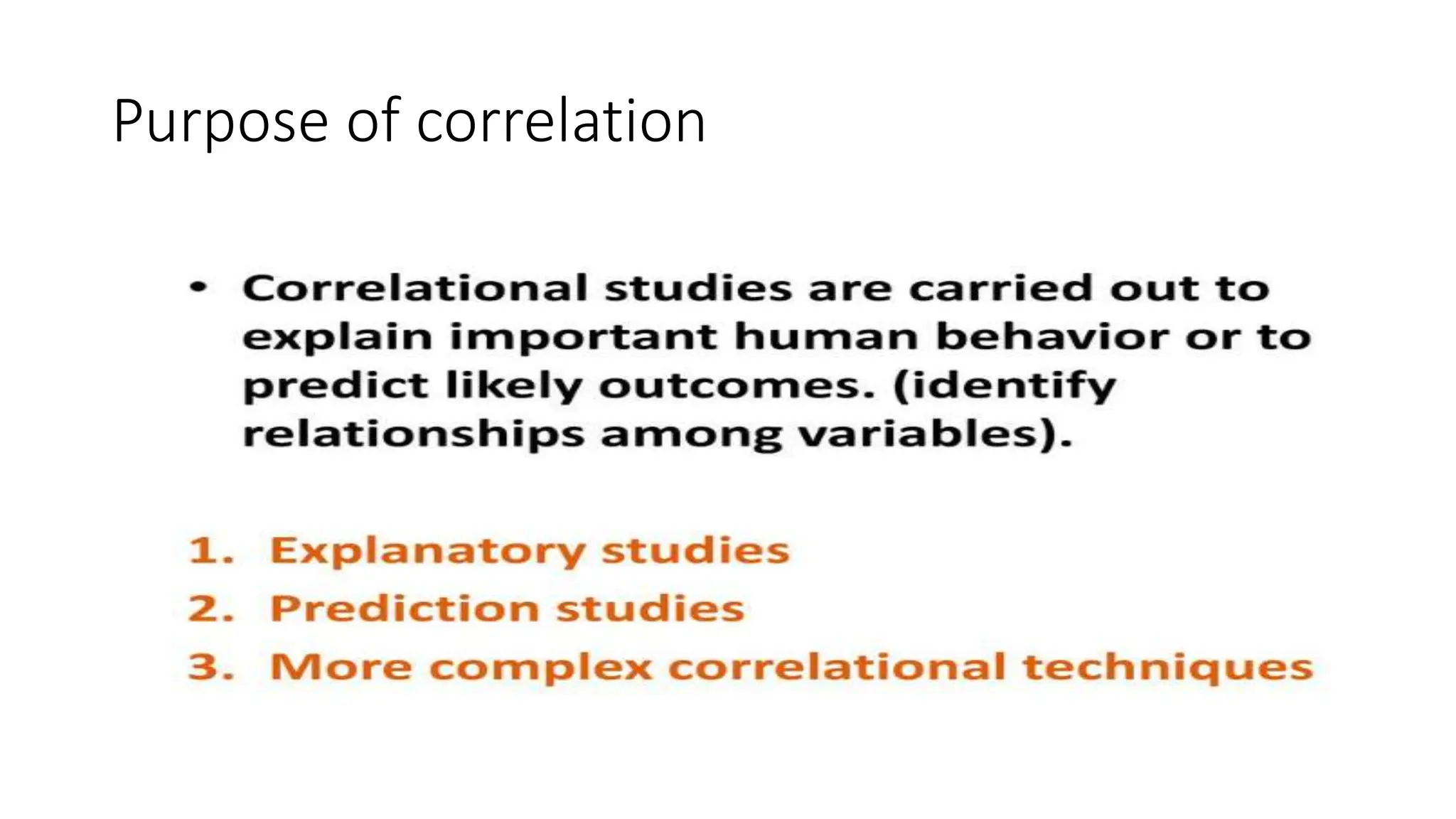
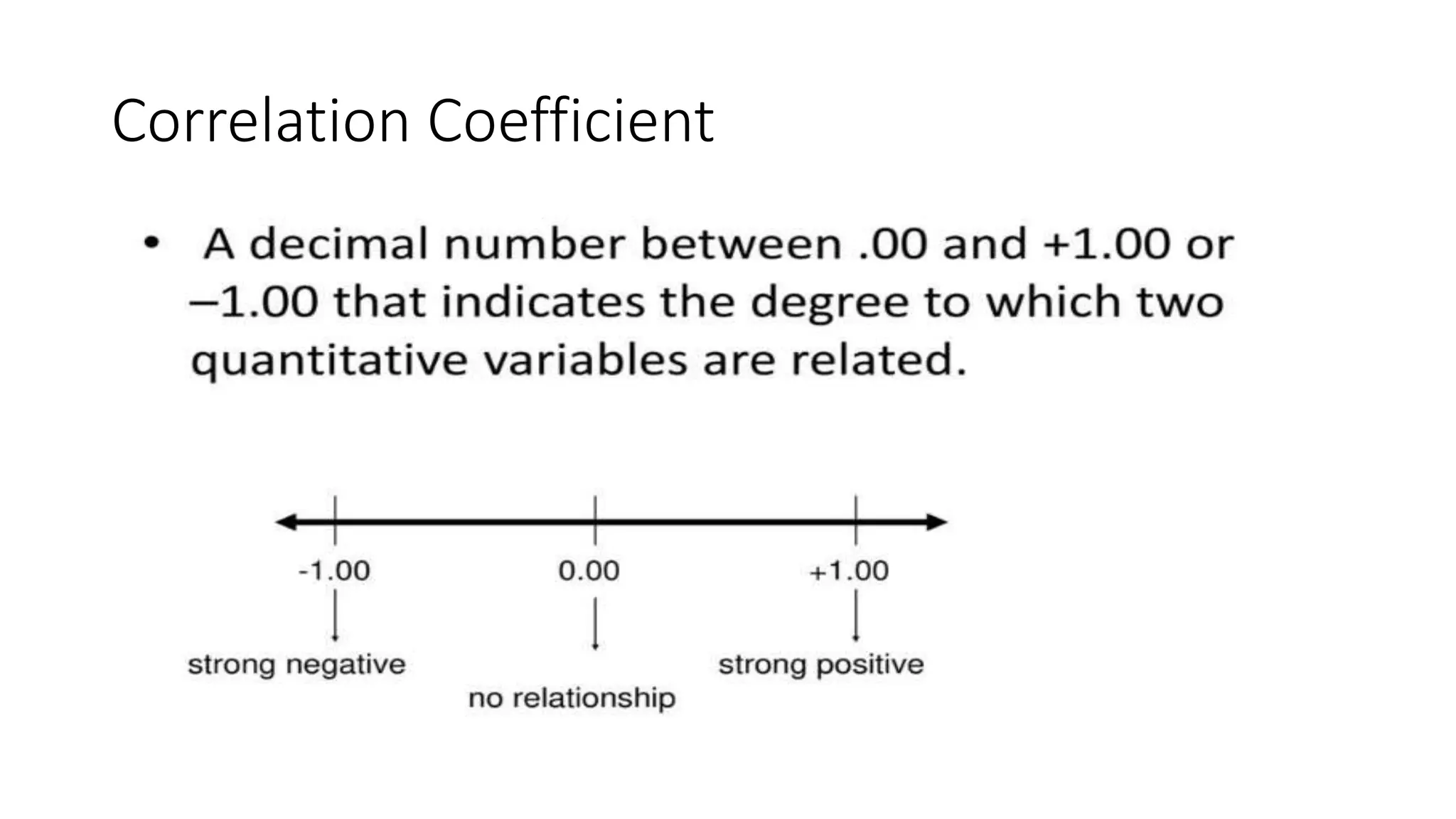
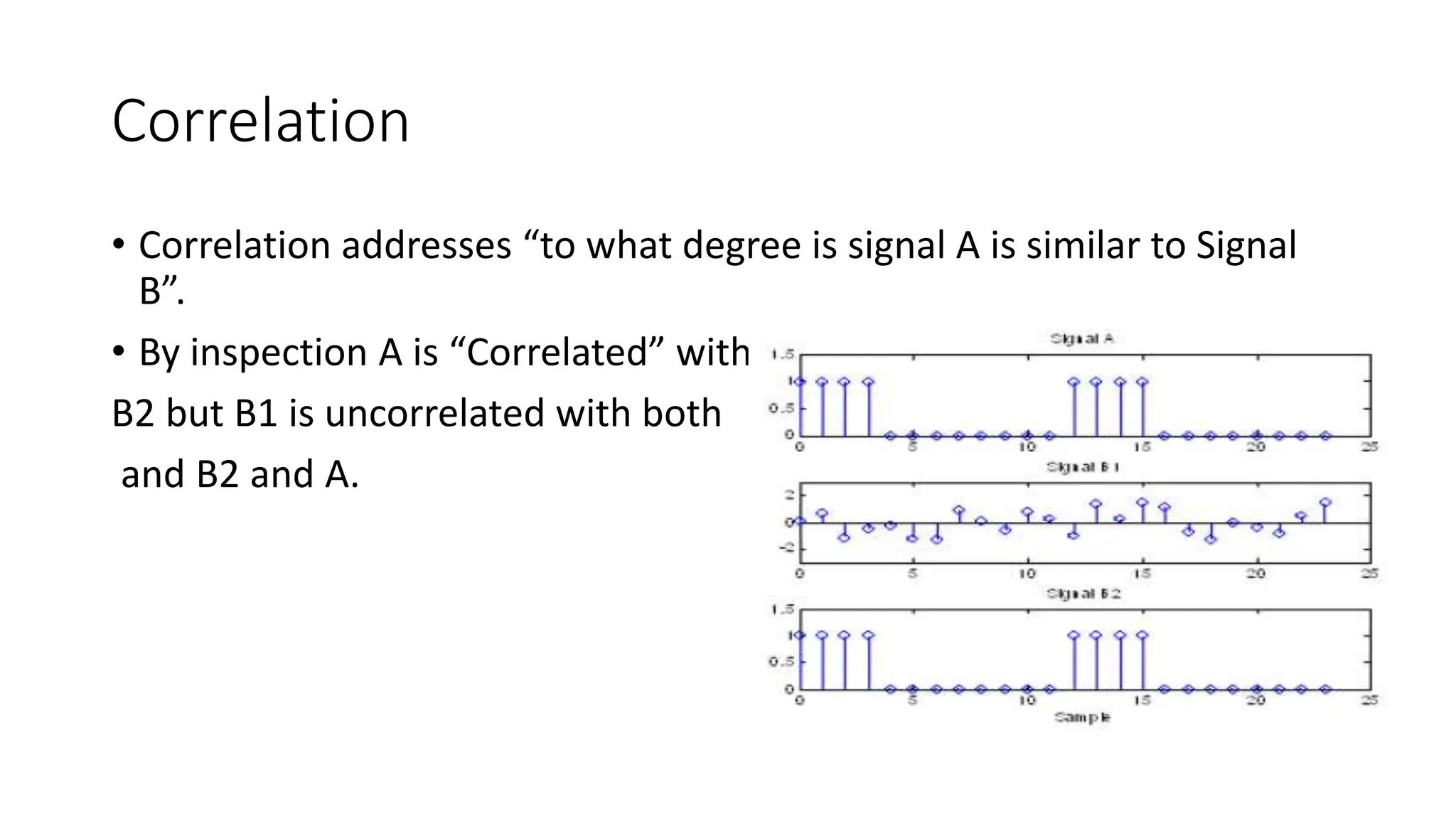
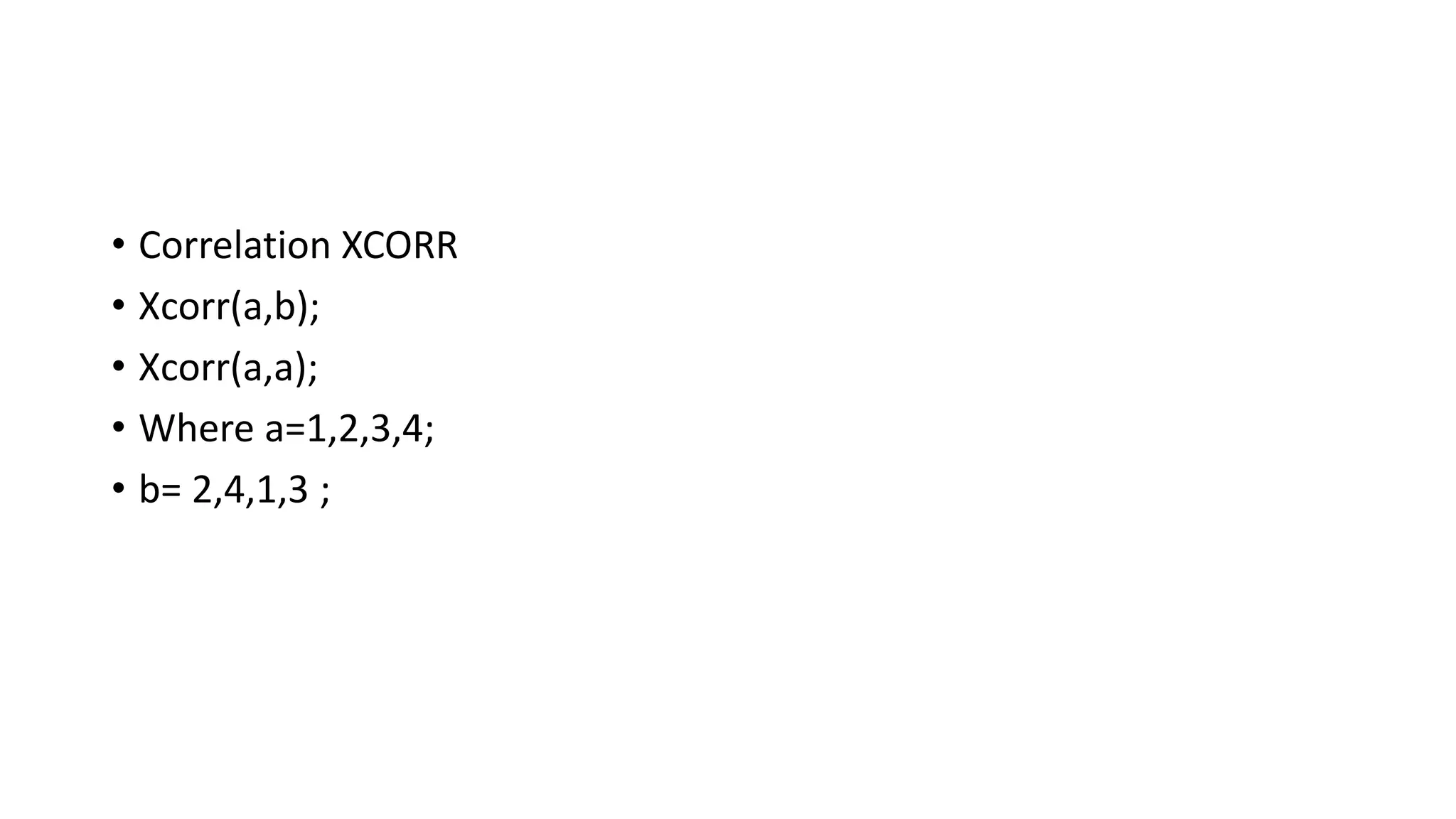
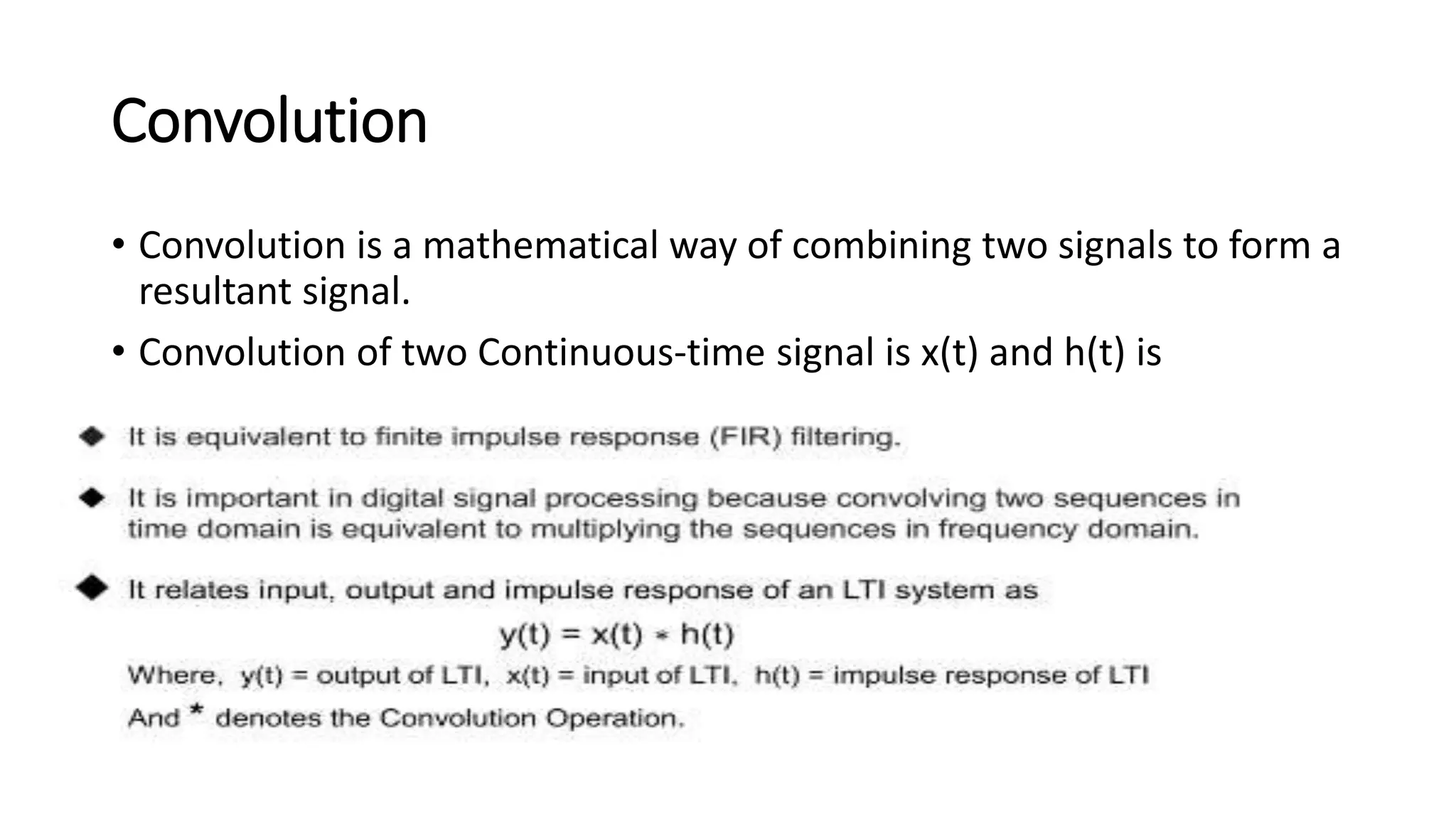
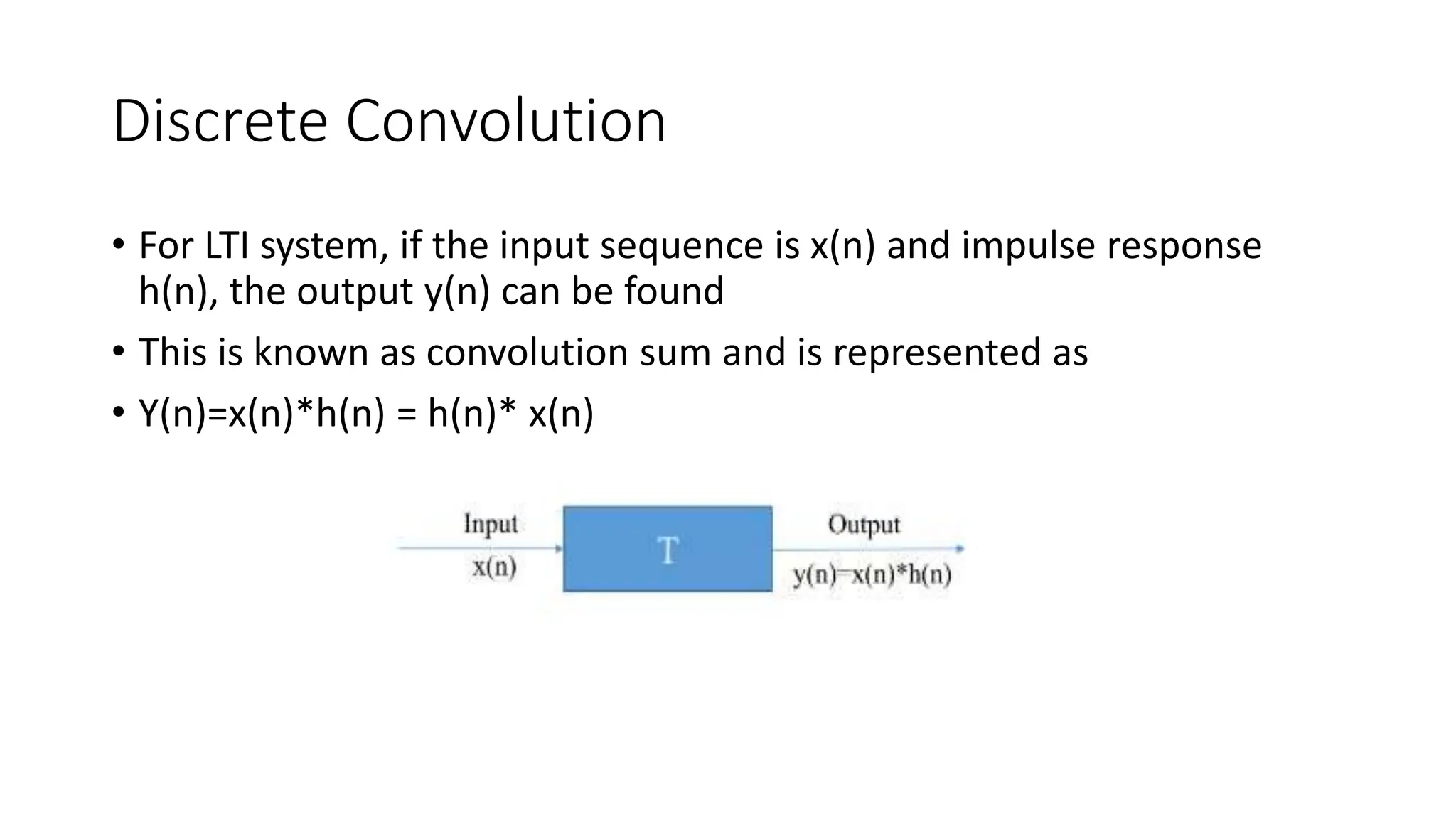
![Properties of Convolution
• Commutative
It states that order of convolution does not matter, which can be shown mathematically as
x1(t)∗x2(t)=x2(t)∗x1(t)
• Associative
It states that order of convolution involving three signals, can be anything. Mathematically, it
can be shown as;
x1(t)∗[x2(t)∗x3(t)]=[x1(t)∗x2(t)]∗x3(t)
• Distributive
x1(t)∗[x2(t)+x3(t)]=[x1(t)∗x2(t)+x1(t)∗x3(t)]](https://image.slidesharecdn.com/module3datacompressiontechniques-240125155550-78e8b7d5/75/Module_3_Data-Compression-Techniques-pptx-11-2048.jpg)
